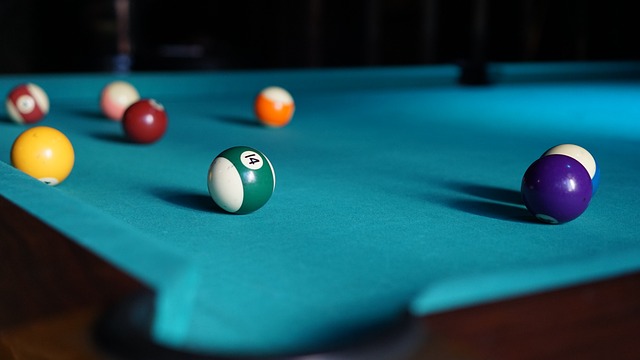The weight of a pool table varies significantly based on its age and construction: antique tables, built with solid hardwoods and traditional methods, weigh 20-40% more than modern models due to their robust mechanics and heavier materials like oak or maple. Standard 8-foot tables range from 150-250 pounds, while larger antiques can surpass 400 pounds. Modern tables use engineered woods for easier assembly and mobility. Thus, "how heavy is a pool table?" depends on its design, with antiques generally much heavier due to historical craftsmanship.
Are antique pool tables heavier than their modern counterparts? It’s a question that puzzles many enthusiasts. This article delves into the world of pool table construction, exploring how materials and design choices impact weight. We’ll conduct a comparative analysis between antiques and modern tables, shedding light on why size and style play a significant role in determining the weight of these iconic gaming pieces. Understanding these factors is key to knowing ‘how heavy is a pool table?’
- Understanding Pool Table Construction and Materials: Factors Affecting Weight
- A Comparative Analysis: Weighing Antique vs. Modern Pool Tables
- The Impact of Size and Design on Pool Table Weight
Understanding Pool Table Construction and Materials: Factors Affecting Weight

Pool tables, both antique and modern, are crafted works of art designed for years of play. Understanding their construction and materials reveals why antique tables often weigh significantly more than their contemporary counterparts. Traditional pool tables feature solid wood frames, typically made from hardwoods like oak or maple, which contribute to their substantial weight. The slate playing surface is another major factor; while modern tables may use composite materials, antiques usually have a solid slate top, adding considerable mass.
Several other factors affect the overall weight of a pool table. The type and thickness of wood used in the construction, the number and design of legs, and even the finish applied all play roles. Antiques, being handmade works with unique craftsmanship, often incorporate intricate details that can increase their weight. These considerations highlight why “how heavy is a pool table?” is not a one-size-fits-all question—and why antique tables, due to their materials and methods, tend to be significantly heavier than modern models.
A Comparative Analysis: Weighing Antique vs. Modern Pool Tables

When comparing antique and modern pool tables, one of the primary considerations is their weight. On average, an antique pool table can weigh significantly more than its contemporary counterpart. This disparity stems from several factors. Firstly, traditional construction methods used in antiques often incorporate heavier materials such as solid hardwoods, which contribute to a substantial base weight. Additionally, the mechanisms and pockets within vintage tables are typically sturdier and more robust, adding further to their overall mass.
Modern pool tables, however, have evolved to prioritize lightness and portability for easier assembly and maneuverability. Manufacturers often use engineered woods and streamlined designs to achieve this, resulting in tables that are generally 20-40% lighter than their antique predecessors. This reduction in weight makes modern tables more accessible for installation in various settings, from homes to recreational centers. Thus, when considering how heavy a pool table is, antique models tend to fall into the heavier category due to their historical construction and design features.
The Impact of Size and Design on Pool Table Weight

The weight of a pool table isn’t a static factor but varies significantly depending on its size and design. Larger tables, given their increased surface area and structure, tend to be much heavier than smaller ones. For instance, a standard 8-foot (2.44 meter) table typically weighs between 150 to 250 pounds (68 to 113 kilograms), while a 9-foot (2.74 meter) or 10-foot (3.05 meter) model can easily surpass 300 pounds (136 kilograms).
Antique pool tables, known for their intricate designs and solid construction, often weigh more than modern counterparts due to the use of heavier materials like solid wood, especially in the legs and frame. These vintage tables can range from 250 to over 400 pounds (113 to 181 kilograms), making them substantial pieces that require careful handling during installation or relocation. In contrast, contemporary pool tables may incorporate lighter materials and innovative manufacturing techniques, resulting in weights that are often significantly lower, catering to both assembly ease and mobility.
In conclusion, the weight of a pool table varies significantly between antique and modern designs. Antique pool tables, constructed with traditional materials like solid wood, are generally heavier due to their robust build and intricate craftsmanship. Modern pool tables, on the other hand, often incorporate lighter composite materials and innovative manufacturing techniques, making them easier to move and install. When considering how heavy a pool table is, factors such as size, design, and construction play crucial roles, influencing both the table’s weight and its overall playing experience.
